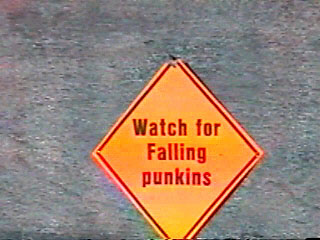
 |
This sign was posted on the back of a catapult. It was somewhat a joke, but then we saw three pumpkins chunked backwards into the crowd, (don't worry, nobody got hit). I don't think I want to be hit by a 10 inch pumpkin falling 100 feet out of the sky. |
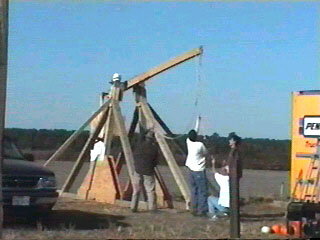 |
I hear that this all started 16 years ago when three guys were standing around after work and one challenged another to see who could hurl a pumpkin the furthest. By the next year the machines were out and several locals gathered around to see who would be the best. One type of launcher is the simple counterweight catapult. Here's a video clip of the catapult class. Click here. |
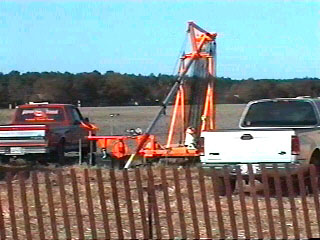 |
Another class is the spring powered catapult. Both
of these types are from the "Human Powered" class.
Would you like to see this one in action? |
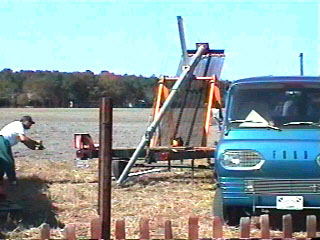 |
Here's another. Click here! Where's the pumpkin you ask? Look closely on the trailer near the bottom of the black springs. The pumpkin is half in a shadow. It sits in a sling connected to a line on the end of the boom. On the photo above, the pumpkin is on the white bucket. |
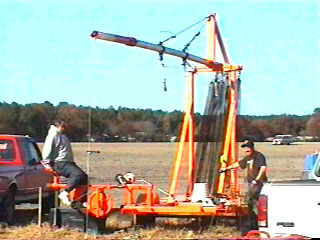 |
A few of these use a bicycle arrangement to crank the beam down and tighten the springs. |
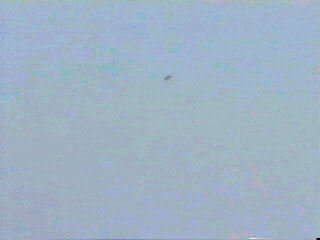 |
Where do these pumpkins end up? Most make it into
the air. See the blur?
The longest shot using the big air cannons was 4,085 feet.
The catapult range is about 300 to 1,500 feet.
|
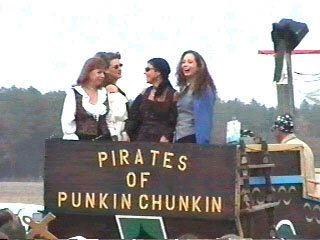 |
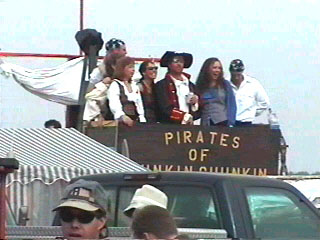 |
What do they get for all of this? A day of fun and pit passes for the team. The general public is not allowed behind the lines. But if you have a machine your team gets a pit pass. Then you can wander around and get a closer look at the real impressive equipment. This year there were 1,500 pit passes issued. The general public was estimated to be 20,000.
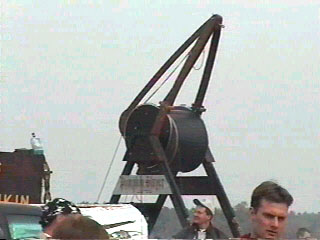 |
It was not uncommon to hear a loud swish or twang or whoosh. On one occasion I turned quickly to see this catapult recoiling from the force of it's launch. The pumpkin was going a good distance. I didn't get to see it shoot, but I think it used a coil spring in the center tube. |
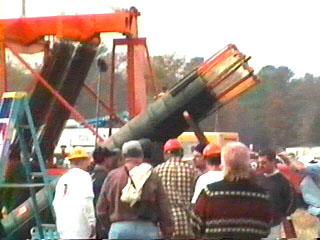 |
This one uses 40 to 50 surgical tubes and the pumpkin is pulled down into the barrel. |
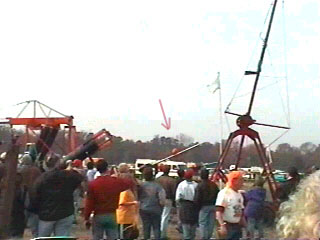 |
On it's first launch the pumpkin made it about 15 feet. You can see the pumpkin below the arrow. Several of the cords broke free and caused a poor launch. Later that day this cannon did much better. |
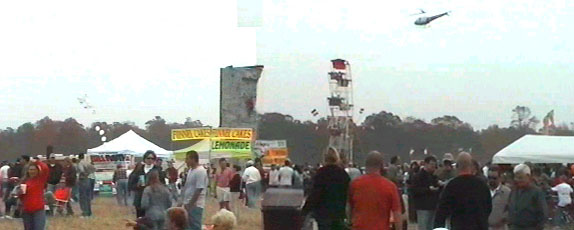
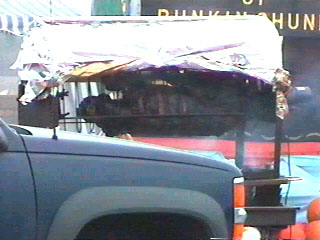 |
Here's an entire pig roasting. |
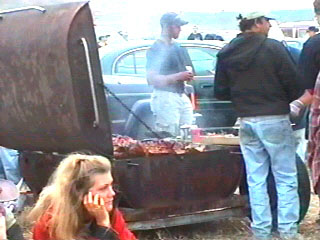 |
These guys were roasting up several sides of beef. I over heard one fellow talking with a friend asking what he thought would happen if the grass field caught on fire. This mornings weather report was, "dry again for the 17th day and high fire danger due to high winds." |
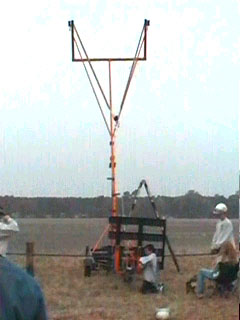 |
Here's a sling shot design. |
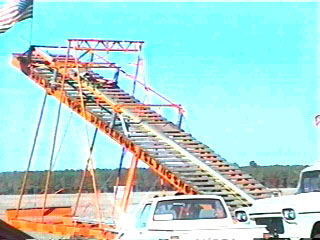 |
And a giant slingshot design. |
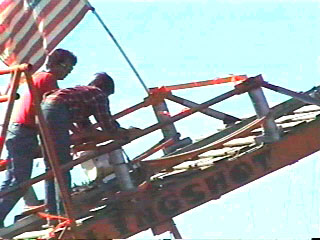 |
These two guys are checking the setup. You can see the elastic bands coming down from the two corner posts to the white bucket in the center. We also saw a high school team project of similar design that was powered by a long rope and a mini van. |
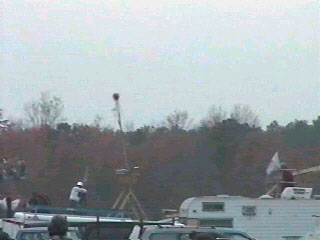 |
Another category is the centrifugal machines. The
arm with the pumpkin loaded on it is spinning 120 revolutions per minute
(RPM). At just the right time a trigger releases the pumpkin and
away it flies.
On their second try they made it 1/2 foot. It launched
nearly straight up. This one is human pedal powered.
|
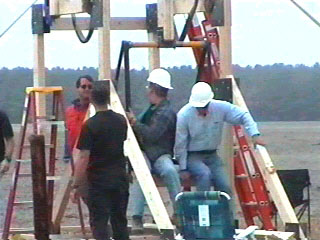 |
One class of launchers is the Human Powered; no compressors, no motors, no mini vans. Most human powered machines use pedals, cranks or ropes to supply the force. These guys take the idea of human power to a new dimension. Four guys sit on this counter weight and then the catapult is set into position for launch. |
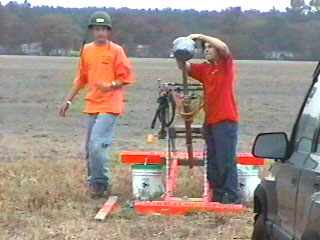 |
Here's one of the smallest machines I saw from the junior class. |
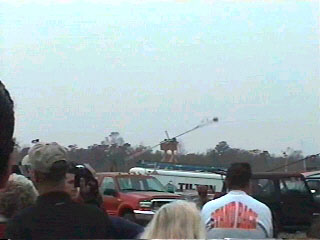 |
Here's another centrifugal. It's powered by a small aircraft engine and my estimated calculation is that it will release a pumpkin at 200 to 250 miles an hour. I wouldn't want this one to release into the crowd. The only thing I ever saw from this one was the dust in the field about 2,000 feet out. The pumpkin was just too fast to see. |
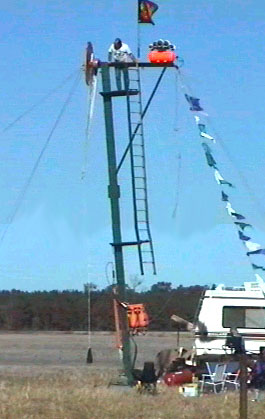 |
This was my favorite. "Fibonicci" The orange tank on the top only powers the warning horn.
There are three tanks on the bottom, some hydraulics lines and a pump,
but I don't know what they're for or how it works. I'm not sure if
air pressure is used to launch.
Want to see it go? Great, click here! Looking closely at the video we saw that it spins around twice before releasing and it's a very far throw that's easy to see. A truly great machine! |
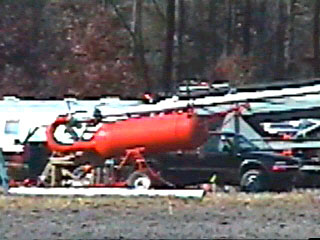 |
What could a tank like this be for you ask? |
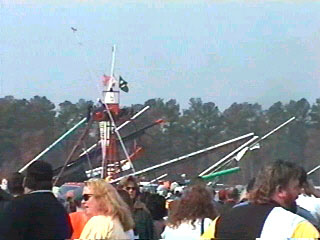 |
How about the big air cannons |
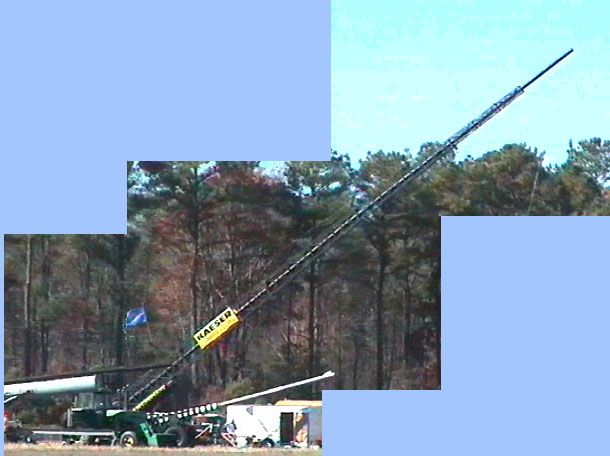
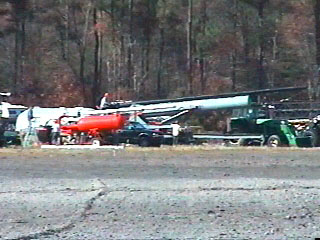 |
Here's a short clip from the big air guns. Click here. |
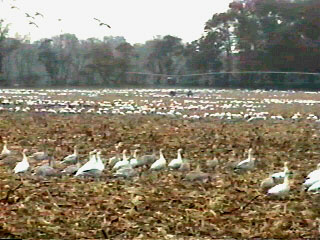 |
Now if you were a Canadian Snow Goose would you choose this weekend, in this field, to rest on your way to Florida? Several thousand geese chose to rest just down the street. |
|
|
|
|
|
ã copyright Nodland 1999-2020